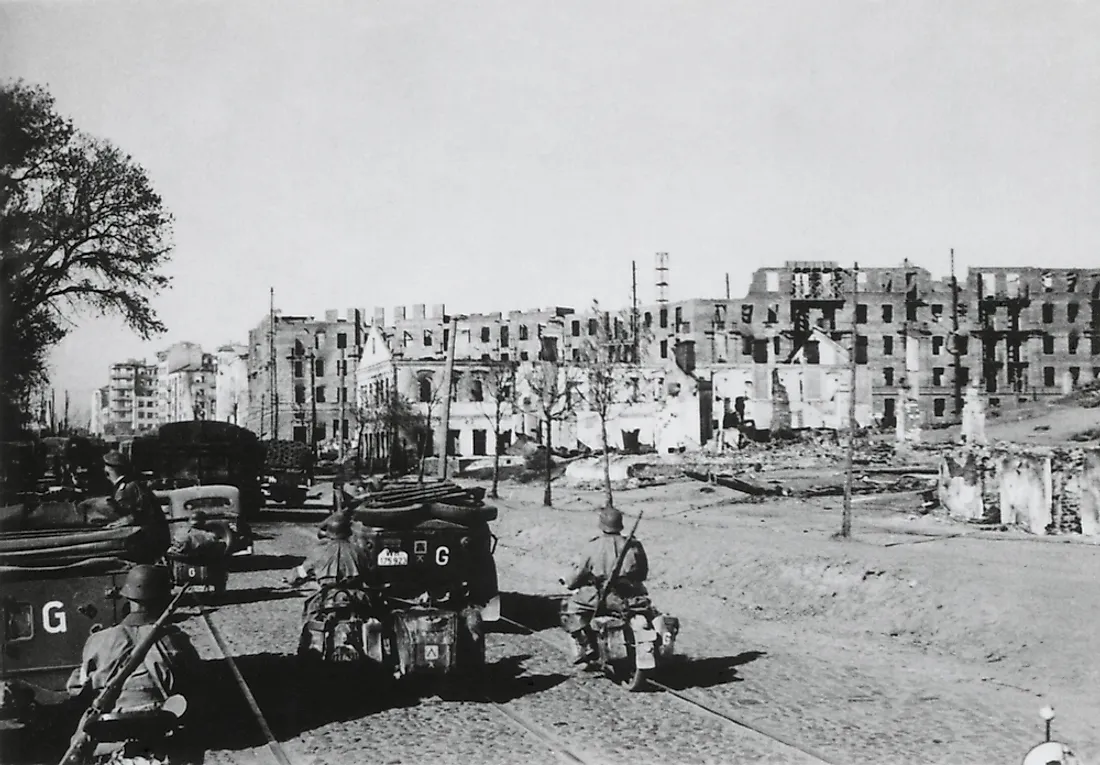What Was Operation Barbarossa?

Operation Barbarossa was the codename given to the Nazi Germany invasion of the Soviet Union during the Second World War. On June 22, 1941, Germany invaded the Soviet Union with the aim of permanently eliminating the perceived threat of the communist state and the occupation of prime land within the Soviet Union it had targeted since the 1920s.
Background to Operation Barbarossa
On August 23, 1939, Germany and the Soviet Union signed the German-Soviet nonaggression pact, but Hitler regarded it a tactical maneuver that would prevent the Soviets from attacking him until he was ready to attack. At the beginning of the Second World War, France and other know nations quickly fell to the Germany. Hitler decided to attack the Soviet Union the following year and therefore began planning for the attack. On December 1940, he signed the first directive “Directive 21” to invade the Soviet Union.
The Invasion of the Soviet Union
During the winter, German commanders negotiated the deployment of special troops behind the frontlines to annihilate the communists, the Jews, and others they believed would oppose German rule. On June 22, 1941, Germany attacked the Soviets with 134 divisions in the front line and 73 more as backup. Three million German soldiers and a further 650,000 soldiers from the Axis powers including Finland, Romania, Slovakia, Italy, and Hungary made one of the most massive invasions in history. The front line stretched from the Black Sea in the south to the Baltic Sea in the north.
For months the Soviets had ignored the warnings from fellow Allied powers concerning the buildup of troops along its borders. The Soviet forces were caught unaware, and most of the Soviet fighting planes were destroyed on the ground. The Germans quickly overwhelmed the Soviets, surrounding their units and cutting off supply lines. The special police service Einsatzgruppen followed close by, identifying and eliminating those who might resist German occupation. The Einsatzgruppen was involved in mass murder against male Jews and Soviet officials. They established concentration camps and quickly filled them with Soviet Jews. In late July, Germany had begun killing the Jews in the concentration camps. As the camps had proved to be effective in suppressing resistance, Hitler began moving Jews from Germany to Russia. The Soviets suffered massive casualties but failed to collapse as anticipated by the German leadership. By late September 1941, Germany had reached Leningrad in the north, by December they were nearing Moscow.
The End of Operation Barbarossa
The German forces were tired after months of campaigning. The Soviets had held them off longer than had been expected. Soviet weather intervened with heavy rains that made roads nearly impassable. The Soviets counterattacked the Germans at the gates of Moscow, forcing them to retreat with severe casualties. The Germans had also overstretched their supply routes and began living off the land. Both sides kept pushing each other as the fight for Moscow led to a standoff. Germany was fighting on two fronts, and Hitler knew he could not win the war in against the Soviet Union.











